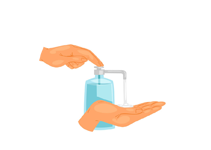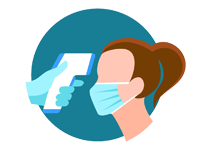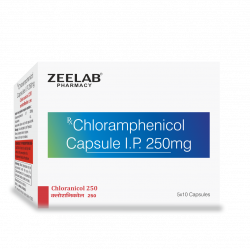Chloramphenicol
Chloramphenicol is a broad-spectrum antibiotic used to treat various bacterial infections. It works by inhibiting bacterial protein synthesis, effectively stopping the growth of bacteria. Chloramphenicol is available in different forms, including eye drops, ointments, capsules, and injections, making it suitable for treating infections in different parts of the body. It is commonly used for eye infections, typhoid fever, meningitis, and other serious bacterial infections. Due to potential side effects, Chloramphenicol is usually prescribed when other antibiotics are ineffective or unavailable. Always use this medication under the supervision of a healthcare professional.
Uses of Chloramphenicol
- Treatment of bacterial eye infections (conjunctivitis)
- Management of typhoid fever
- Used for bacterial meningitis
- Treatment of serious respiratory infections
- Skin and soft tissue infections
How Chloramphenicol Works
Chloramphenicol works by inhibiting bacterial protein synthesis, preventing bacteria from growing and multiplying. It binds to the bacterial ribosomes and blocks the production of essential proteins needed for bacterial survival. This helps the immune system eliminate the infection effectively. Due to its strong action, Chloramphenicol is used for serious infections when other antibiotics fail.
Benefits of Chloramphenicol
- Effective against a wide range of bacterial infections
- Available in multiple forms for different infections
- Works quickly to stop bacterial growth
- Used for infections resistant to other antibiotics
- Can be used for severe infections like meningitis and typhoid
How to Take Chloramphenicol
Chloramphenicol should be taken as prescribed by a doctor. Eye drops or ointments should be applied directly to the affected eye, while oral capsules should be swallowed with water. Injections are administered by a healthcare provider. The dosage and duration depend on the severity of the infection. Do not stop taking the medication abruptly, as it may lead to bacterial resistance.
Types of Dosage Available
- Eye drops
- Ointment
- Capsules
- Injection
Side Effects of Chloramphenicol
- Nausea and vomiting
- Diarrhea
- Allergic reactions (rash, itching)
- Bone marrow suppression (rare but serious)
- Blurred vision (when used as eye drops)
- Gray baby syndrome (in newborns, if misused)
Safety Advice
- Use only as prescribed by a doctor
- Avoid long-term use due to potential side effects
- Not recommended for newborns unless prescribed
- Monitor blood levels if using for extended periods
- Do not wear contact lenses while using eye drops
- Inform your doctor about any allergies or other medications you are taking
Frequently Asked Questions (FAQs)
Q. Can Chloramphenicol be used for viral infections?
A. No, Chloramphenicol is only effective against bacterial infections and does not work on viruses like the flu or common cold.
Q. How long does it take for Chloramphenicol to work?
A. The effect usually starts within a few hours, but full recovery may take a few days. Always complete the full course as prescribed.
Q. Is Chloramphenicol safe for children?
A. It should be used in children only under medical supervision, as it may cause serious side effects in infants.
Q. Can I stop using Chloramphenicol once I feel better?
A. No, stopping early may lead to antibiotic resistance and recurrence of the infection. Always complete the prescribed course.
Q. Does Chloramphenicol cause vision problems?
A. When used as eye drops, temporary blurred vision may occur. Avoid driving or operating machinery until your vision clears.
Download India's most affordable pharmacy app
- Compare with medicine prices
- Save upto 90% on your medicine bills

Temperature Controlled storage and delivery

Regular Sanitization

Disinfected Packaging

















 Added!
Added!